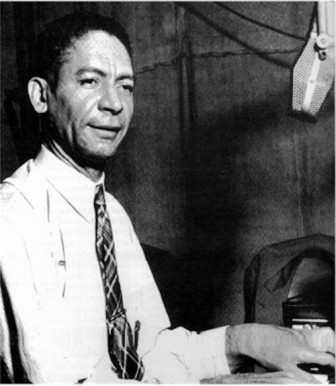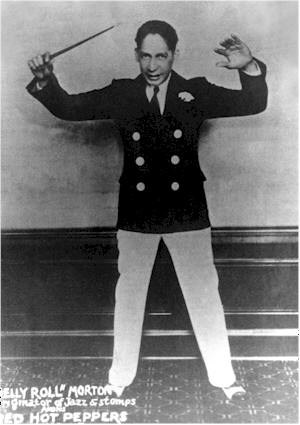Swing music accompanied by brass instrumentals and a “rhythmic play over a four-beat rhythm” remained popular from roughly 1935 to 1946 (Campbell, 51). Electro swing on the other hand, is relatively new to the 21st Century and has undoubtedly left the world intrigued. When swing music was revived in the 1990’s, it was modernized. Today, electro swing is modernized once again and can be considered a by-product of the 1990s swing revival period.
Electro swing as referenced in the website by Bass Feeds the Soul states, “Electro-swing combines vintage swing with contemporary production techniques and the styles of house music and hip-hop” (Bass Feeds the Soul, 2015). Another given name for electro swing is “Swing-House” which “incorporates loops, samples, and melodies that either reference or pull directly from the Swing Era, but layered with and supplemented by modern electronic music” (Bass Feeds the Soul, 2015).
What is interesting about electro swing is that it achieves a unique blend of classical swing elements particularly from the brass and woodwind sections with electronic elements such as the synthesizer. How interesting it is to place the old and new together to create an electrifying sound and a new style that is fun and easy to dance to!
What characterizes the music of the electro swing revival most is its use of classic swing elements over a four-beat rhythm with a modern synthesized accompaniment. In “Catgroove,” Parov Stelar begins the piece with a very simple synthesized base. As the piece progresses, the use of modern electric devices becomes more prominent. In fact, some of the electric sounds in this work are quite similar to many of the synthesized sounds used in the early 2000’s revival period with works from musicians such as The Black Eyed Peas and their distinct “bending” of sound in the synthesized bass line. A good example to the link between swing and the revival of swing in this time period is the song, “A Little Party Never Killed Nobody” by Fergie.
After watching Fergie’s music video, it is apparent that there are undertones of electro swing music but the music doesn’t seem to be as sophisticated in instrumentation or the use of varied tempos that we hear in pieces by Parov Stelar. With that being said, Fergie’s video amps up the swing style in a visual sense through dance and the use of period costumes.
Currently, the big names in the electro swing revival are Parov Stelar, an Austrian DJ, and Caravan Palace, an electro swing group from France. Although these are the big names, other groups of electro swing include Boogie Belqiue of Belgium, The Carlson Two from Germany, Shakti Bliss of the USA, Grant Lazlo of France, Tallulah Goodtimes of the United Kingdom, and Gansterish from the USA.
The Swing Era produced many different themes that are still used and recycled today. Examples of this can be found in movies such as The Great Gatsby starring Leonardo DiCaprio, television shows such as Dancing with the Stars, advertisements by the GAP clothing company, and fashion houses that continuously bring back clothing styles from this period.
I believe that music from the original swing area continues to be revived in various ways because the music itself is vibrant and alive and the dancing is intricate and challenging while appearing to be easygoing and effortless. Older generations hold this style of music dear to them, while younger generations appreciate the original swing style but need to associate old with the new through modernization of this particular style.
There is definitely an idea or mood associated with music of the swing era that continues to be felt and understood today and throughout the revival periods. One of the most prominent ideas from swing that is carried through to the revivals is the strong foundation of using a four-beat rhythm. Like a house, you can build upon a good foundation, and electro swing does this through its use of varied rhythms, combining traditional with modern instruments, and melding dance moves from swing with modern dance moves found in styles such as hip hop.
One of the strongest features of swing music is that it is timeless. In other words, the music does not rely on the lyrics to get its point across. This feature ultimately keeps swing music alive and timeless, and allows electro swing to build upon this style by injecting a new vibe within the sound. “Big-Band Swing” as referenced in the textbook Popular Music of America” is a style of swing which expanded the orchestra and changed the rhythmic foundation of swing. I find there is also a connection between this type of swing and electro swing where the electronic instruments in electro swing mimic the volume of sound that resonates from the brass section in big-band swing.
Although I have learned to appreciate traditional music of all styles and genres, I find myself gravitating towards music that has a new sound. In this respect, I enjoy electro swing more than period swing music simply because electro swing provides some of the more modern sounds and instrumentation that I am more familiar with. I appreciate composers of the swing era, but I admire composers of electro swing who are able to bring a new dimension to a modern generation of music lovers.
BIBLIOGRAPHY
Berklee CW 461. “Electro Swing: History.” cw461.com. Accessed July 17, 2018 http://www.cw461.com/style/electro-swing
Campbell, Michael. Popular Music in America: The Beat Goes On. Nelson Education, 2012.
Harrison, Angus. “Electro Swing Is the Worst Genre of Music in the World, Ever.” Thump. December 09, 2015. Accessed July 17, 2018. https://thump.vice.com/en_us/article/wnyjk9/electro-swing-is-the-worst-genre-of-music-in-the-world-ever.
Pointdexter, Ashley. “The Rise of Electro-Swing.” Bass Feeds The Soul. March 13, 2015. Accessed July 18, 2018. http://www.bassfeedsthesoul.com/quick-news/2015/3/13/the-rise-of-electro-swing
All videos provided are taken from YouTube.com



